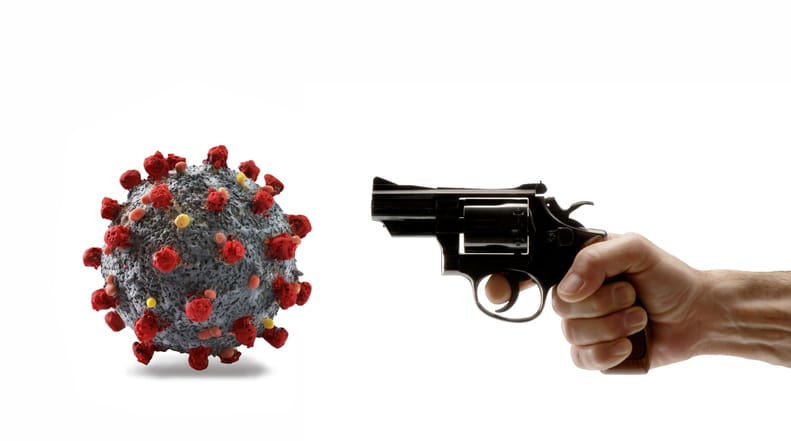One of the byproducts of the pandemic and the associated lockdown has been less in-person human interaction. However, as students return to school and employees return to work, we have seen an uptick in gun violence and mass shootings. We are still evaluating mental health conditions and the potential impact of COVID-19 in the United States and around the world.
In this blog, we will review the implications of the coronavirus and active shooter mitigation strategies, as well as how to evolve your organization or institution accordingly.
Mitigating Gun Violence Liability
Risks are outcomes — the tangible outcomes are loss of life and damages, while the intangible outcomes are loss of reputation and liability. When it comes to liability, it is important to understand there are two key terms to keep in mind:
- Foreseeability – Should we have foreseen this event could have occurred?
- Reasonability – Did we use reasonable care to protect our stakeholders?
Every facility needs to determine the potential impact and counter-measures to improve the survivability of an active shooter event. These counter-measures typically include video surveillance and mass notifications, as well as an emergency operations plan with formal policies and procedures.
Unfortunately, technology is often an afterthought when it comes to active shooter policies and procedures. There may be technology in place, but it needs to be properly leveraged as part of active shooter preparedness and response.
Leveraging Technology in an Active Shooter Emergency
The definition of prevention is “the action of stopping something from happening or arising.” The question is how do we accomplish that with technology? While we do not have precognition to identify crimes before they occur, we do have artificial intelligence that can be employed to identify a firearm and initiate the emergency operations plan within seconds.
Let’s say you identify an active shooter when monitoring the footage from your video surveillance cameras — Now what?
Traditional security technologies tend to be more reactive. Emergency response plans are initiated after someone identifies an active shooter and calls for help or after a firearm is discharged and manual emergency notifications are sent.
The reality is most active shooter situations end in five minutes or less. Additionally, the majority of active shooter incidents end before the police even arrive. For those reasons, every single second during that period of time is absolutely critical.
Technology is evolving and taking a more preventative approach. Many facilities, such as high school and university campuses, already have video surveillance systems in place. With that said, it is almost impossible for a security team to monitor all cameras at all times.

New visual gun detection technologies, such as Omnilert Gun Detect, leverage artificial intelligence (AI) to actively monitor the video feed. Taking it one step further, the lockdown process and emergency operations plan are then automated. Of course, training employees and students is also an important aspect of proactive active shooter preparedness.
The Most Important Minute
The first minute of an active shooter situation is the most important. It will impact the ultimate outcome of your emergency response. There are three core elements of that first minute when it comes to emergency communications:
- Alerting – Sending out multi-channel notifications and initiating third-party safety technology, such as access control systems and/or audible alerts.
- Mobilizing – Summoning law enforcement and first responders and activating lockdown procedures.
- Collaborating – Engaging with the emergency response team on next steps.
Considering and planning your course of action during those first 60 seconds will decrease risk and improve your ability to succeed if and when the time comes. Emergencies may vary, but they all require a critical communications plan.



